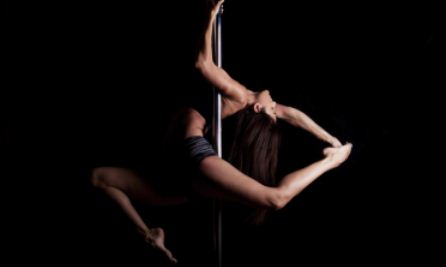 Pole dancing continues to be a much-revered sport and fitness training in Australia today. Combining the gracefulness of a gazelle and the fitness of a lioness, it has captured the hearts of thousands of women who wishes to be fit in a unique way. This somehow provides a boon to many professional pole dancing trainers lives. Armed with a pole dancing fitness insurance in Australia policy, they proceed to start their own studio in the hope of making it big in the industry.
Pole dancing continues to be a much-revered sport and fitness training in Australia today. Combining the gracefulness of a gazelle and the fitness of a lioness, it has captured the hearts of thousands of women who wishes to be fit in a unique way. This somehow provides a boon to many professional pole dancing trainers lives. Armed with a pole dancing fitness insurance in Australia policy, they proceed to start their own studio in the hope of making it big in the industry.
Apart from crafting an exercise routine, you will obviously need new poles when deciding to open a studio. This are not your ordinary backyard pole though. With the level of strength needed in performing even in the simplest of pole tricks can be quite rigorous, finding the right one must be carefully taken into mind. For newbie pole dancing studio owners, these pointers will help in finding the best tool for your trade.
- Ditch the usual novelty poles like the ones used and promoted by celebrity spinners may only prove to bring more claims to your pole dancing fitness insurance Australia studio policy. They may be just right for your fledgling budget but be reminded that the brute force reflected on your studio’s pole can be quite extreme. If it’s long term investment you project, go for more expensive yet sturdy ones like X-Poles, Lil Mynx, or MiPole.
- Take note that there are 2 types of poles to use in a pole dancing studio; static or spinning. Static poles, as the name implies, is a fixed pole where student-dancers do their routine. They do not spin but remain as is. Spinning poles, on the other hand, bring more excitement to a standard routine. Frequently used by experienced or advanced dances, it allows them to spin on the pole for long periods of time.
- As a studio owner, you need to have both static and spinning poles. If you want to focus on just giving beginner class programmes though, starting with 5 to 7 static poles will suffice in a small studio. This is because your students may not have to do the spin mode just yet and you’ll most likely be teaching basic routines. It is also one way to prevent newbies from experimenting with complex spins only to end up injured in the process.
- There are many types of poles materials- chrome, titanium gold, brass or stainless steel. Choosing the best pole material, however, should not be based solely on design themes and all that. Chrome, though cheapest, is a little lose on the grip hold side while pricey brass delivers the tighter grip hold.
- It may also be wise to require students to use pole dancing gloves. These gloves help to prevent injuries brought about sweaty hands that will make them slip-off the pole. It also protects the hands from being burnt and from developing calluses. This is excellent for newbies who simply want to build more strength while preventing injuries from happening.
- Go for 40mm to 45m size. Not all students have huge hands to accommodate the 50mm diameter pole. Gripping a bigger or smaller pole will directly impact one’s performance particularly stability and strength.
- Consider also your studio’s ceiling height. As much as possible, look for poles that can provide extensions when you buy. Or perhaps, a contractor who can custom-fit them for you.
There’s more to choosing your new studio’s poles than what meets the eye. From material to grip size, budget and facility limitations, adequate considerations must be taken into mind to ensure safety of your students as well as that of your business. Do remember to have appropriate pole dancing fitness insurance Australia policy to cover you when disaster strikes. To learn more, call our hotline or send us a request for a free quote online.

